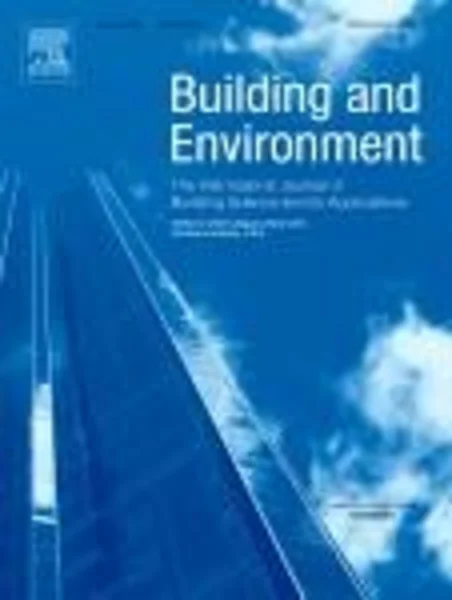-
a limit state design (lsd) approach for comparing relative drying performance of wood-frame envelope systems with full-scale lab testing
جزئیات بیشتر مقاله- تاریخ ارائه: 1390/01/01
- تاریخ انتشار در تی پی بین: 1390/01/01
- تعداد بازدید: 408
- تعداد پرسش و پاسخ ها: 0
- شماره تماس دبیرخانه رویداد: -
the capacity of drying out moisture accumulated within stud cavities, especially moisture due to rain penetration, is an important characteristic affecting the performance and durability of building envelope systems. this paper introduces a new approach for evaluating such drying performance based on the concepts and procedures of limit state design (lsd) used in structural engineering. for a well performing envelope, the moisture load must be less than the drying capacity of the system. the drying capacities are obtained through full-scale experiments that utilize moisture loading derived from a moisture source (water tray) placed at the bottom of the stud cavity. in moving out of the cavity, part of the moisture will be absorbed by the materials surrounding the stud cavity. when any part of the wall specimen reaches 20% mc, the cumulative evaporation from the water tray is termed as the icea (in-cavity evaporation allowance) of that wall system. the icea value is dependent on the envelope configuration and is a good indicator of the drying performance of that wall system. by comparing icea values of wall systems with their respective moisture loads, those envelopes having icea values higher than the amount of rain penetration calculated from prevailing driving rain and faults in the envelope are deemed to have adequate drying capacity.
مقالات جدیدترین رویدادها
-
استفاده از تحلیل اهمیت-عملکرد در ارائه الگوی مدیریت خلاقیت سازمانی و ارائه راهکار جهت بهبود
-
بررسی تاثیر ارزش وجوه نقد مازاد بر ساختار سرمایه شرکت های پذیرفته شده در بورس اوراق بهادار تهران
-
بررسی تأثیر سطح افشای ریسک بر قرارداد بدهی شرکت های پذیرفته شده در بورس اوراق بهادار تهران
-
بررسی تأثیر رتبه بندی اعتباری مبتنی بر مدل امتیاز بازار نوظهور بر نقد شوندگی سهام با تأکید بر خصوصی سازی شرکت ها
-
تأثیر آمیخته بازاریابی پوشاک ایرانی بر تصویر ذهنی مشتری پوشاک ایرانی (هاکوپیان)
-
چگونه توانستم یادگیری تعدادی از دانش آموزان پایه ششم ابتدایی دبستان منظریه در سال تحصیلی 1400-1399 در درس فارسی، مهارت روان خوانی را افزایش دهم؟
-
رابطه سکوت سازمانی با اثربخشی سازمانی در بین کارکنان ادارات ورزش و جوانان استان خراسان جنوبی
-
بررسی و تحلیل دامنه عدم قطعیت تغییرات آینده درجه حرارت در زیر حوزه کوشک آباد، استان همدان
-
moment redistribution of continuous unbounded post-tensioned high strengthconcrete beams strengthening with cfrp laminate (experimental investigation)
-
free vibration analysis of shear deformable beams resting on two-parameter elastic foundation
مقالات جدیدترین ژورنال ها
-
مدیریت و بررسی افسردگی دانش آموزان دختر مقطع متوسطه دوم در دروان کرونا در شهرستان دزفول
-
مدیریت و بررسی خرد سیاسی در اندیشه ی فردوسی در ادب ایران
-
واکاوی و مدیریت توصیفی قلمدان(جاکلیدی)ضریح در موزه آستان قدس رضوی
-
بررسی تاثیر خلاقیت، دانش و انگیزه کارکنان بر پیشنهادات نوآورانه کارکنان ( مورد مطالعه: هتل های 3 و 4 ستاره استان کرمان)
-
بررسی تاثیر کیفیت سیستم های اطلاعاتی بر تصمیم گیری موفق در شرکتهای تولیدی استان اصفهان (مورد مطالعه: مدیران شرکتهای تولیدی استان اصفهان)
-
بررسی تاثیر گرایش به تفکر انتقادی بر توانایی حل مساله خلاق در دانشجویان
-
شناسایی عوامل به وجود آورنده چابکی در بانک سپه استان خوزستان با رویکرد آمیخته
-
مکانیسم اثر ضدمیکروبی و سمیت نانوذرات فلزی
-
سیر تحولی محله و سرای محله از ابتدا تاکنون جهت تعاملات اجتماعی
-
بررسی نقش استراتژی های تعدیلی در شرکت های تحت تاثیر تحریم ها (مورد مطالعه: کشور روسیه)




سوال خود را در مورد این مقاله مطرح نمایید :